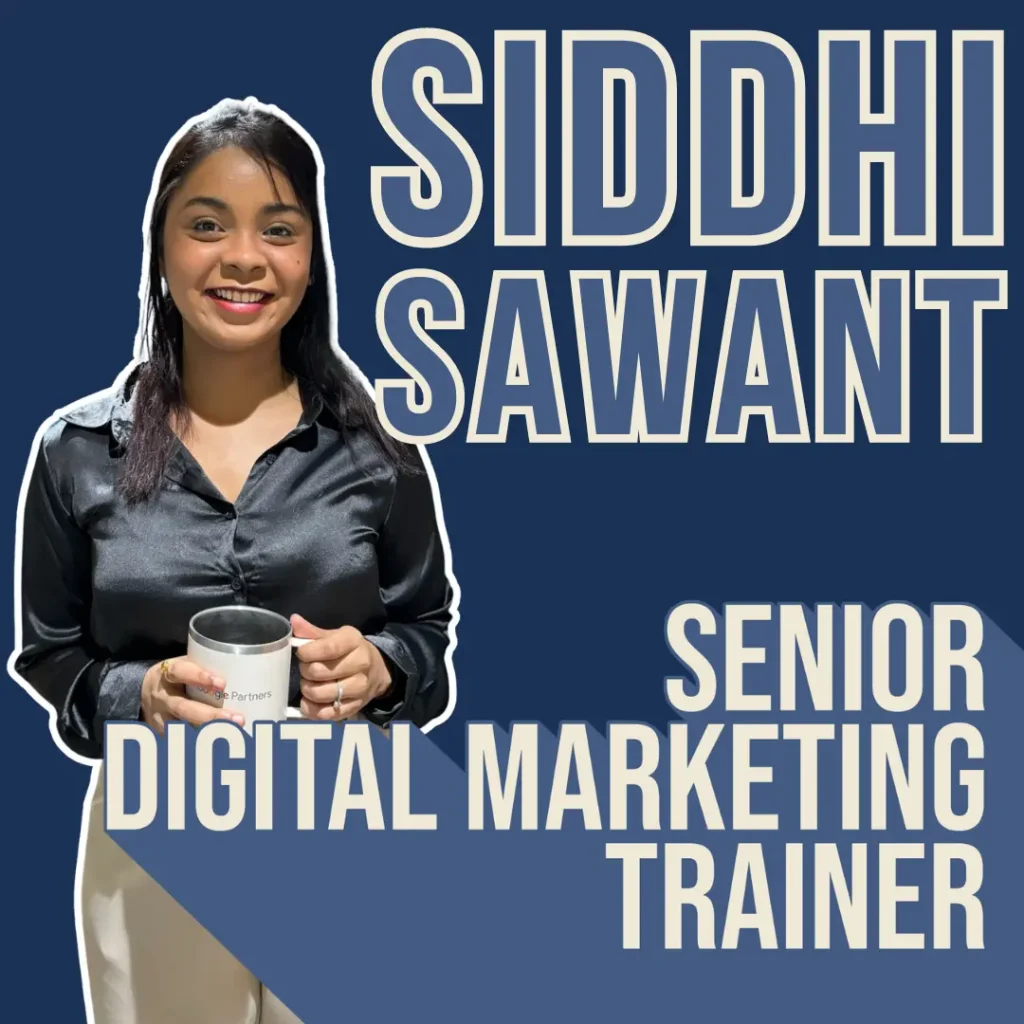1.
100% Placement Support
2.
Professional Certifications
3.
Unique
Modules
Modules
4.
Expert
Faculty
Faculty
Add value to your career profile and boost your prospects with the best digital marketing institute in Pune.

100% Placement Support
Professional Certifications
With the executive digital marketing course in Pune at Digifine Academy, you will be able to learn digital marketing through comprehensive modules as well as a 20% theoretical and 80% practical approach. Throughout your digital marketing classes in Pune, you will master the core skills and tools through live projects given by highly experienced faculty. Gain relevant industry exposure and enhance your understanding of essential concepts to advance your career with this digital marketing diploma.
There are no fixed eligibility criteria for this course. All you need is creativity and willingness to learn!
However, some very primary prerequisites are –
Following are some of the assessment stages for a candidate’s admission into the course –
The digital world is replete with incredible career growth opportunities for aspiring professionals. Digital marketing is one of the most in-demand skills in such a fast-paced world. If you wish to become a digital marketer, then the best way to do this is by joining the best digital marketing institute in Pune. Digifine Academy’s executive digital marketing program is a globally recognized course with comprehensive modules that provide you with the basic knowledge to help you kickstart your career. With live projects and practical digital marketing training, you can get global exposure as well as professional certifications to get you ready to step into the industry with confidence.
Digifine is one of the most renowned institutes with an executive digital marketing course in Pune that is designed to help you upskill and master the basics of digital marketing. Here, you will be trained by highly experienced faculty on all the essential industry-relevant skills and tools while receiving 100% guaranteed placement assistance. Earn multiple professional certifications and get post-course support through this digital marketing diploma to enhance your career in the field.
including portfolio-building, resume-building & mock interviews
industry-recognized courses designed by international standards
learn through live projects and a hands-on training approach to gain industry exposure.
industry experts with years of expertise in the digital marketing field
Digifine is here to help you even after you have graduated from the institute. Get the best guidance without hesitation from friendly and encouraging trainers at any time.
Digifine Executive Digital Marketing Course in Pune entails 3-4 months of intensive training on detailed topics, tools and techniques.

Founder of Digifine & Adbizit
12+ years of digital marketing expertise
Worked with brands like TATAcliq.com, Audi, Hyundai, MG Motors, Mahindra, Nykaa, Lodha, Kalpatru & more.

5+ years of experience in digital marketing
Worked with Audi, MG Motors, Dream Realtors, AT Academy, Eume, etc.

2+ years of digital marketing experience
Worked at Disney+ Hotstar, Omnicom & Adbizit on digital marketing strategy for brands like Mercedes, Sony, TransUnion Cibil, & more.
Whether you are a school or college student, working professional, entrepreneur or are simply interested in learning digital marketing, Digifine Academy offers the best digital marketing course in Pune that is open to everyone. Anyone who has the willingness to learn can sign up for the Executive Digital Marketing Diploma irrespective of their experience and background. This globally recognized course is designed by industry experts taking into consideration a variety of perspectives and goals. You can learn everything straight from scratch and master the basic concepts and tools through practical digital marketing classes in Pune guided by patient and encouraging trainers.
At Digifine, the digital marketing course in Pune fees is affordable and the institute also offers you a no-cost EMI option to pay your fees comfortably.
Digifine Academy of Digital Education (DADE) is a popular and reputed institute in Pune offering top-notch digital marketing classes in Pune with 100% placement support. The highly experienced faculty here as well as unique syllabus makes it stand out from other institutes.
If you are looking for digital marketing classes in Pune that guide you through basic and advanced concepts of digital marketing, then the Executive digital marketing course in Pune is the best pick for you!
Digital marketing course in Pune fees have a broad range, depending on the curriculum of the course, facilities provided, perks given and recognition as well as expertise of the institute.
Absolutely! Digital marketing is a great career for everyone, as it integrates both technical and creative skills while providing a platform for individuals to learn and grow immensely. Digifine’s digital marketing course in Pune can help you build a successful career in the industry with 100% placement support and global exposure.
If you wish to learn digital marketing at an advanced and professional level, then Digifine’s Executive Digital Marketing Course in Pune for the duration of 5-6 months is the perfect fit for you.
If you have enrolled for Digifine Academy’s digital marketing course in Pune, then its placement support and multiple professional certifications can help you find a great job at a top agency in India.
One of the only institutes that provides 100% placement support in India is Digifine Academy of Digital Education. Through its digital marketing course in Pune, it also offers placement assistance through help in portfolio and resume building, mock interviews, masterclass on interview etiquettes, etc
The digital world is replete with incredible career growth opportunities for aspiring professionals. Digital marketing is one of the most in-demand skills in such a fast-paced world. If you wish to become a digital marketer, then the best way to do this is by enrolling for the best digital marketing classes in Pune. Digifine Academy’s executive digital marketing diploma is a globally recognized course with comprehensive modules that provide you with the basic knowledge to help you kickstart your career. With live projects in this hands-on digital marketing course in Pune, you can get global exposure as well as professional certifications to get you ready to step into the industry with confidence.
Section 1: Introduction to UI/UX
1.1 Define UI/UX:
Explanation of UI (User Interface) and UX (User Experience) | Importance of a user-centric approach in design
1.2 Importance of Design:
How effective design enhances user perception and interaction | Case studies demonstrating successful design impact
Section 2: Understanding the Audience
2.1 User Personas:
Creating and understanding user personas | Influence of personas on design decisions
2.2 User Journey:
Introduction to user journey mapping | Understanding user expectations during website navigation
Section 3: WordPress UI/UX Environment
3.1 Explore the WordPress Dashboard:
Guided tour of WordPress dashboard | Purpose of various sections (editor, customizer)
3.2 Theme Selection:
Choosing a theme aligned with brand and goals | Highlighting themes with good UI/UX practices
Section 4: Wireframing and Prototyping
4.1 Introduction to Wireframing:
Importance of wireframing in design | Hands-on using tools like Balsamiq or Sketch
4.2 Prototyping:
Introducing prototyping tools for interactive designs | Role of prototypes in testing and refining user experience
Section 5: Typography and Color Theory
5.1 Typography Basics:
Choosing readable fonts | Typography’s contribution to overall design
5.2 Color Theory:
Teaching color theory principles | Guiding students in choosing a color scheme
Section 6: Layout and Composition
6.1 Grid Systems:
Introduction to grid systems for layout | Maintaining consistency and alignment
6.2 Visual Hierarchy:
Techniques for establishing visual hierarchy | Guiding users through content
Section 7: Interactive Elements
7.1 Buttons and Call-to-Actions:
Design principles for buttons and CTAs | Role of interactive elements in guiding user actions
7.2 Forms and User Input:
Best practices for designing user-friendly forms | Importance of feedback during form submission
Section 8: Responsive Design
8.1 Mobile-First Design:
Designing for mobile devices first | Using media queries for responsive design
8.2 Testing on Various Devices:
Demonstrating how to test designs on different devices | Utilizing browser developer tools for testing
Section 9: WordPress Customization
9.1 Customizer and Theme Options:
Using WordPress Customizer for live preview | Theme options for further customization
9.2 Widget Areas:
Explaining widget areas for adding dynamic content | Encouraging experimentation with widgets
Section 10: User Testing
10.1 Usability Testing:
Introducing usability testing concepts | Gathering feedback from potential users
10.2 Iterative Design:
Emphasizing iterative design based on user feedback | Implementing improvements in design
Section 11: WordPress Plugins for UX
11.1 SEO Plugins:
Importance of SEO and recommended plugins | Impact of SEO on user experience
11.2 Performance Optimization Plugins:
Introduction to Performance Optimization Plugins | Discussion on page speed and user satisfaction
Section 12: Portfolio Showcase
12.1 Project Showcase:
Assigning a project for designing the various brand brochures & websites | Encouraging students to showcase their work in a portfolio format
Section 13: Feedback and Critique
13.1 Group Critiques:
Conducting regular group critiques to discuss design choices | Encouraging constructive feedback and learning from peers
Section 14: Stay Updated
14.1 Industry Trends:
Discussing current UI/UX design trends | Encouraging exploration of design communities and resources
Section 15: Resources and Further Learning
15.1 Introduction to Design Tools:
Overview of design tools like Adobe XD, Figma (emphasizing Figma in
this course) | Hands-on exercises to familiarize students with Figma
Section 1: Introduction
Introduction to Figma Essentials training course | Getting started with Figma training | What is Figma for & does it do the coding? | What’s the difference between Ul and UX in Figma | What we are making in this Figma course | Class project 01- Create your own brief
Section 2: Wireframing – Low Fidelity
What is Lo Fi Wireframe vs High Fidelity | Creating our design file & introducing frames
Section 3: Type, Color & Icon Introduction
The basics of type & fonts | Rectangles Circles Buttons Rounded corners | How to use color | Strokes plus updating color defaults | Object editing and how to escape | Scale vs Selection Tool | Frames vs Groups | Class project 02- Wireframe | Where to get Free icons for Figma | Matching the stroke of our icons | How to use Plugins in Figma for icons | Class project 03 – Icons
Section 4: Pages
How to use Pages
Section 5: Prototyping – Level 1
How to prototype | Prototype animation and easing | Testing on your phone with Figma Mirror | Class project 04 – Testing on your phone
Section 6: Animation Level 1
What is Smart Animation & delays | Class project 05 – My first animation
Section 7: Commenting
Sharing & Commenting on Figma file with Stakeholders | Share editing with other UX designers in Figma
Section 8: Moodboard – High Fidelity
How I get inspiration for UX projects | How to create a mood board | Class Project 06 – Moodboard
Section 9: Columns
How to work with Columns & Grid
Section 10: Colors
Color Inspiration & the eyedropper | How to create a color palette | How to make gradients | How to create & use Color Styles | Class Project 07 – Colors & Columns
Section 11: Text & Fonts Advanced
Font on Desktop vs Browser Figma | What fonts can I use plus font pairing in Figma | What common font sizes should I choose in web design | How to make Character Styles | Lorem ipsum & Placeholder text | Useful things to know about text | How fix missing fonts | Class project 08 – Text
Section 12: Drawing
Drawing tips and tricks | Squircle buttons with ios rounded courses | Boolean Union Subtract Intersect Exclude Pathfinder | What is the difference Union vs Flatten Figma | Class Project 09 – Making stuff | Smart Selection & Tidy up
Section 13: Working with Illustrator
Do you need to know Illustrator with Figma
Section 14: Images
Tips & tricks for using images | Masking Cropping images | Free image & plugin
Section 15: Working with Photoshop
Do you need Photoshop for UX Design in Figma? | Class Project 10 – Images
Section 16: Autolayouts & Constraints
Autolayout & Constraints | Class project 11 – Buttons | Auto Layout for spacing | How to use constraints | Combining Nested frames Auto Layout & Constraints | Adding Text Box Autoheight to Autolayout | Class Project 12 – Responsive Design | Nice drop shadow & Inner drop shadow effects
Section 17: Effects
Blur Layer & Background Blur & Image Blur | How to make Neumorphic ui buttons | Class project 13 – Effects
Section 18: Saving & History
How to save locally & save history
Section 19: Components & Instances
What are components | Updating & Changing & Resetting your components | You can’t kill main components | Where should you keep your main components | Intro to the forward slash / naming convention | Class Project 14 – Components
Section 20: Variants
How to make component variants | Another way to make variants | How to make a Multi Dimensional Variant | Class Project 15 – Variants
Section 21: Making a form
How to make a form using variants | Class Project 16 – Form | Putting it all together in an desktop example
Section 22: Prototyping – Level 2
How to add a popup overlay modal | How to make & prototype a tool tip | What are Flows | Slide in mobile nav menu overlay | Class project 17 – Prototyping | How to pin navigation to top | How to make horizontal scrolling swipe | Automatic scroll down the page to anchor point
Section 23: Animation & Micro Interactions
The difference between animation & micro interactions | Animation with custom easing | Class Project 18 – My Second Animation Make animated transitions | Class Project 19 – Page transition | Micro interactions using interactive components | Micro interaction toggle switch | Micro Interaction burger menu turned into cross | Class Project 20 – Micro interaction
Section 24: How to share you document
Talking to your developer early in the figma design process | Sharing Figma with developers & engineers handoff
Section 1: Introduction
Create a Black and White Image | Quickly improve images with Camera Raw | Speed up Photoshop | Discover Panel – Find hotkeys and panels fast!
Section 2: Get Started
Use Photoshop’s interface efficiently | Customize your workspace | Create a new project | Open images in Photoshop | Save your Photoshop work | Export your work in Photoshop | Get around Photo- shop fast-zoom-pan | Use the History Panel to fix your mistakes | How to use Undo in Photoshop | Resize an image | Crop and straighten photos | The proper- ties panel
Section 3: Layers Part 1
What Are Layers | Start Using Layers | Use the Layers Panel | Move Layers | Arrange Images Quickly | Layer Opacity vs. Fill
Section 4: Layers Part 2
Layer Types Explained | Customize the Layers Panel | Identify Layers | Filter Layers | Manipulate Layers – Free trans- form | Use of Blending Modes | Lock Layers
Section 5: Selections Part 1
Selections explained | Rectangular Marquee | Elliptical Marquee | Layer masks | Combine 2 images with layer masks | Quick Selection Tool and Magic Wand | Make an orange purple | Change the color of a t-shirt
Section 6: Selections Part 2
Lasso Tools | Pen Tool Overview | Direct & Path Selection Tools | Quick Mask Mode | Color range – Select a Color in a Photo | Remove Background | Save and Load Selections | Select and mask hair
Section 7: Raster Layers
Use the Brush Tool | Soften Skin Imperfections | Use the Eye Dropper & Swatches | Resolution vs Image Size | Color Replacement tool – Replace Color
Section 8: Shape Layers
Create Shapes | Modify Shapes | Use Custom Shapes | Design Shapes | Generate Guides from Shapes | Place Images in Shapes Clipping Mask vs Layer Mask vs Vector Mask
Section 9: Artboards
Introduction | Find out how artboards can help you | The hidden value of artboards | Creating and resizing artboards | Duplicate artboards and using guides | Export- ing artboards
Section 10: Creative Layer Styles (Effects)
Introduction | Download and Scale Layer Styles | Create Gold Text Effect | Embed Text in Photos-displace | Use Global Light | Neon Effect
Section 11: Work with Smart Objects
Smart Objects Explained | Linked Smart Objects | Create a realistic mockup | Filters with Smart Objects
Section 12: Repair Your Photos
Remove Skin Issues (Spot Healing Brush, Healing Brush) | Remove Watch and Necklace (Clone Stamp Tool) | Clean Up Face Imperfections (Frequency Retouch- ing) | Remove anything from photo (Con- tent Aware Fill) | Move People in Photos (Content Aware Tool) | Dodge, Burn, Sponge tools | Remove Red Eyes from Photos | Patch Tool
Section 13: Actions
Create an action | Resize lots of images
Section 14: Text Layers
Text layers explained | Font types | Get New Fonts | Learn Typography Best Practices | Combine Fonts | Identify a Font | Stay consistent in your projects – styles
Section 15: Adjustment Layers
Solid-Gradient-Pattern | Enhance faded photos | Change object color-Hue-Saturation | Change Environment – Color Balance | Black n White, Color mixer, Photo filter | Lookup Tables-LUTs
Section 17: Camera Raw – Edit Your Photos
Camera Raw – introduction | Raw image format vs JPEG | My workflow in Camera Raw | The two keys to camera raw edits | One-click wonders in Camera Raw | Graduated filter and the before/after shot
Section 18: Cloud Documents
What are cloud documents? | Saving to the cloud vs locally (on your computer) | Version history | The biggest drawback with cloud documents
Section 19: Effects
Reshape faces | Create a lens flare | Blur & Blur Gallery
Section 1: Introduction
What is Graphic Design? Introduction to Adobe Illustrator | Vector Graphics vs Raster Graphics
Section 2: Basics
Interface Overlook | Create and Save New Document | Customize your workspace | Navigation – Zoom Tool & Pan Tool
Section 3: Working with Objects
Selection Tool | Transformations | Group, Ungroup | Copy, Paste, Paste in Place | Basic Shapes | Shape builder tool | Path- finder | Aligning and Distributing Objects
Section 4: Drawing
Direct Selection Tool | Pen Tool | Anchor point Tool | Pen Tool alternatives | Curvature Tool | Symmetrical drawing | Concentric drawing techniques
Section 5: Appearance of Objects
Stroke settings, width tool | Swatches | Gradients | Layer Panel | Appearance panel | Effects | 3d
Section 6: Brushes
Calligraphic Brushes | Scatter Brushes | Art Brushes | Bristle Brushes | Pattern Brushes | Image Brushes | Strokes on image
Section 7: Images
Working with Images | Preparing simple images for tracing | Preparing complex images for tracing | Image Trace
Section 8: Type
Types of Typefaces | Character formatting | Paragraph formatting | Using Text styles
Fonts | Variable and SVG Fonts | Touch Type | Type on a Path | Type and Shapes | Warp Text | Create Outlines from Text | Image within Text | Text Wrap
Section 9: Advanced Techniques
Introduction to Masking | Clipping Mask | Opacity Mask | Recolor Artwork | Puppet Warp tool | Symbols | Symbol Tools | Dis- tort and Transform tools | Graphs | Blend- ing Objects | Creating Patterns | Refining Pattern Design | Gradient Mesh | Freeform Gradients | Perspective-Intro | Perspective Drawing | Transform Tools (scale and shear tool) | Transform each effect
Section 10: Artboards & Export
Artboards | Saving work for Print | Saving work for Web | Export for Screens
Learning to create structured and professional websites using the most used industry software, setting up and customizing websites, using plugins and effective techniques to engage and capture consumers.
Learning HTML codes for creating and structuring websites, learning CSS, best HTML practices for Search Engine Optimization.